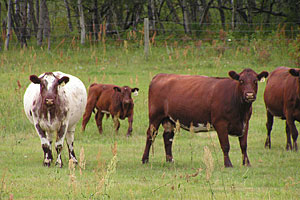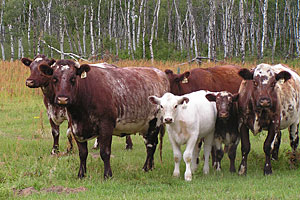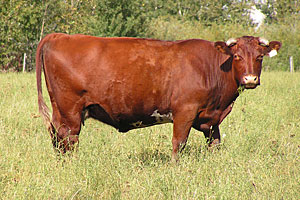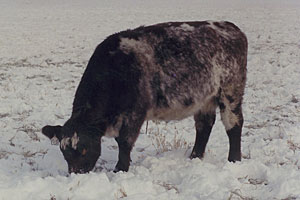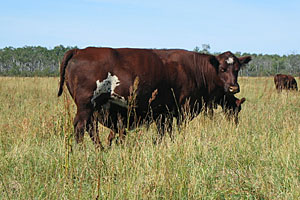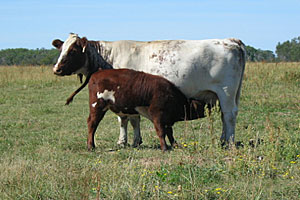Cow Herd
We believe that the quality of our cowherd has a direct impact on the quality of the bulls that we sell. Every one of our purebred cows spends her lifetime, other than breeding season, running alongside our commercial cows. If they cannot maintain their condition and bring a good calf home every fall, they are culled.
As the new growth starts to come on at the end of April the cows begin calving. They are expected to calve on pasture with minimal supervision. Quite honestly we just don't have time to play nursemaid to every cow.
It is in this May and June time period that we expect our cows to gain weight, rapidly, and most of them do. The two most important things to us in a beef cow are fertility and fleshing ability. The cows are rotated through pastures all summer and fall, then put on crop stubble and wasteland. The calves are weaned in December. The cows graze standing corn in the winter in order to decrease our winter feed costs. Our cows are expected to maintain their condition on a ration that is nutritionally equivalent to average beef quality hay.
When the snow melts in early April the cows begin to graze carry over grass that was set aside the previous summer. Our cows are out grazing 365 days a year. If they see a roof that means there has been problem and most likely she will not be around next year to cause another problem.
In 2021, we sent our bull calves to a custom feeder to be tested for individual feed efficiency. Then in 2022, we installed feed bunks that measure individual animal intake. We are using this information to select individuals for breeding that are more feed efficient. Both bull calves and heifer calves are now tested at our own ranch.
After reading the research, talking with other producers measuring individual intakes, and seeing the results of our own trials, we conclude that we will be able to maintain the performance of our cow herd while at the same time decreasing daily feed intake by a minimum of 10%.

